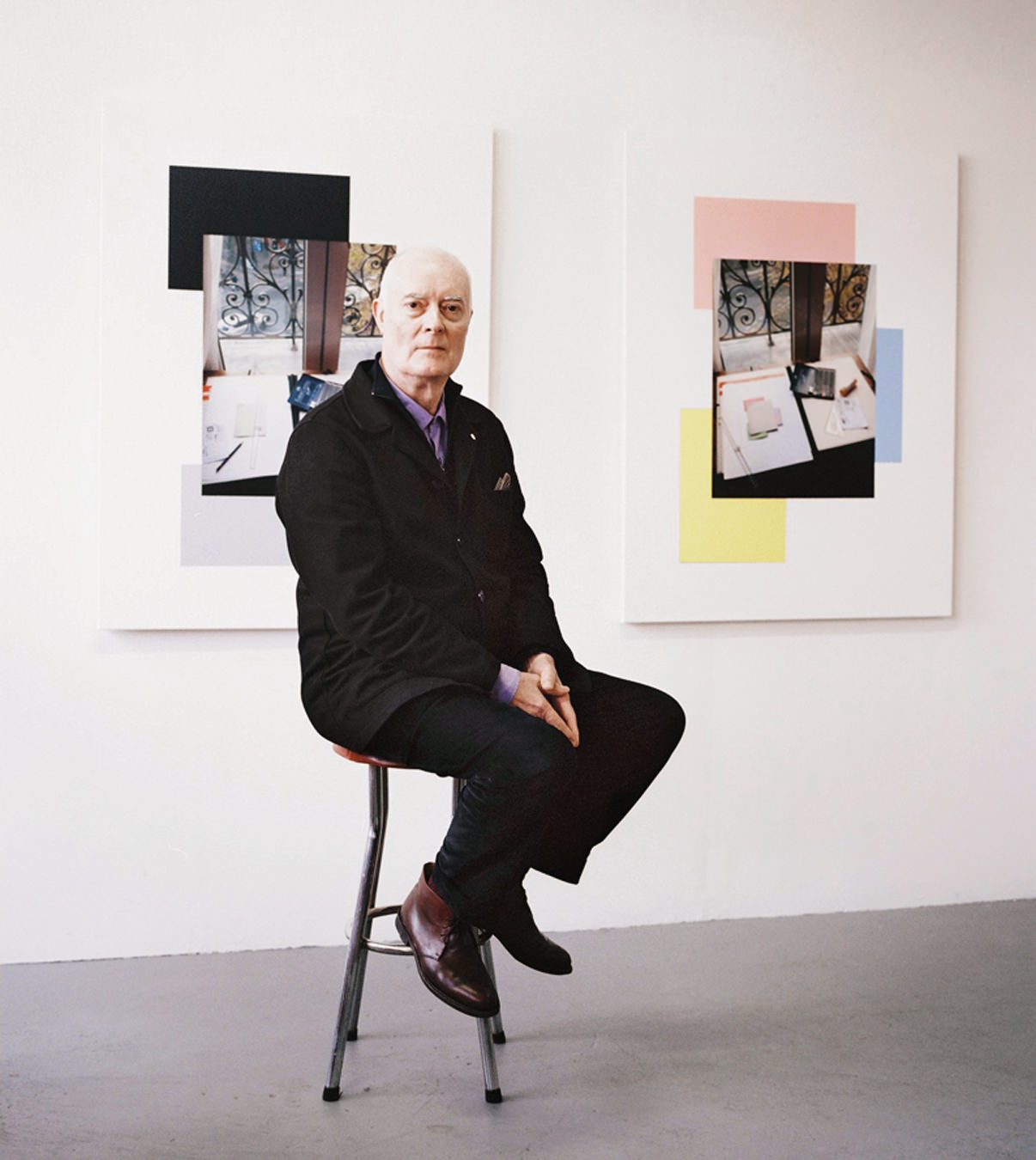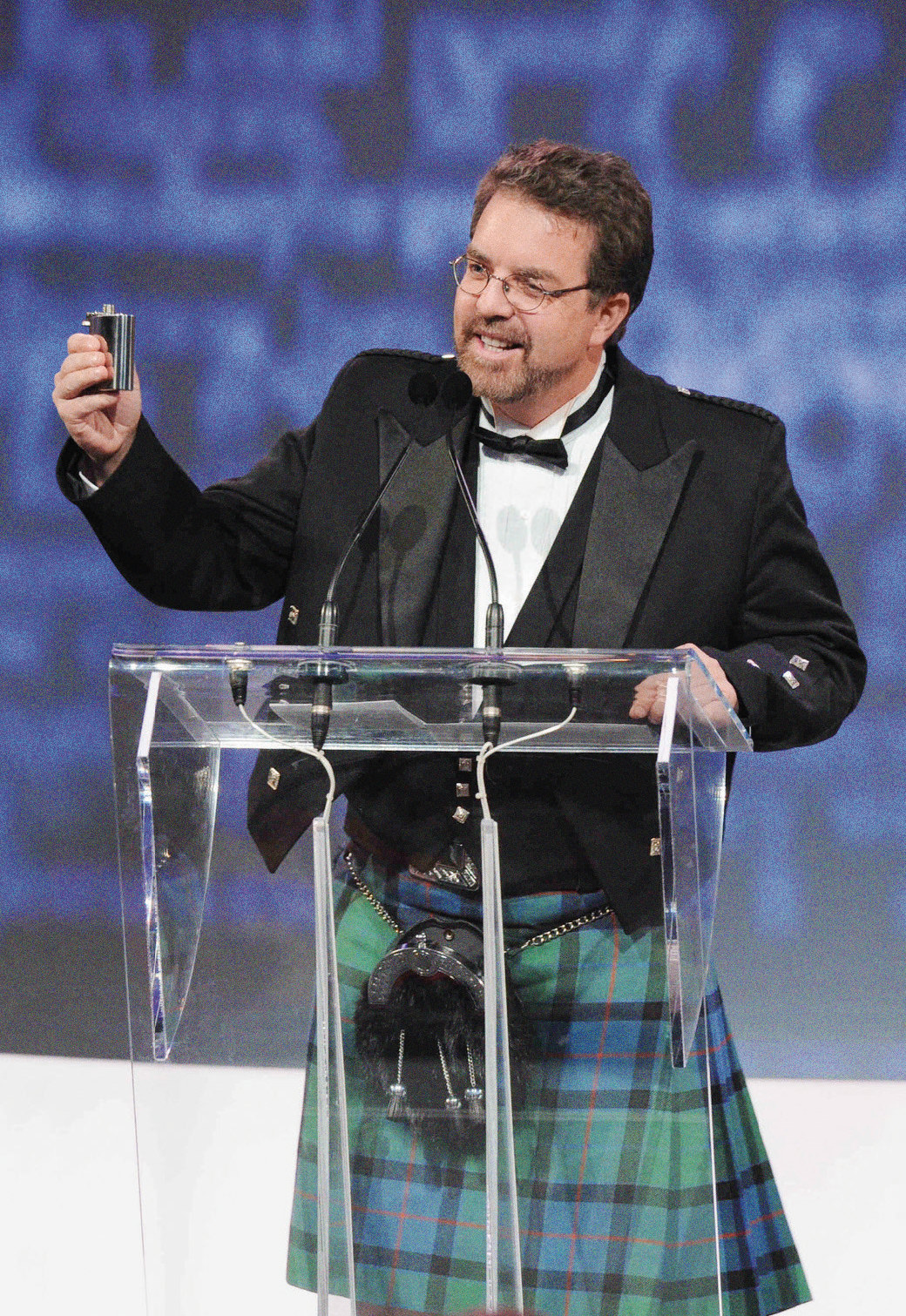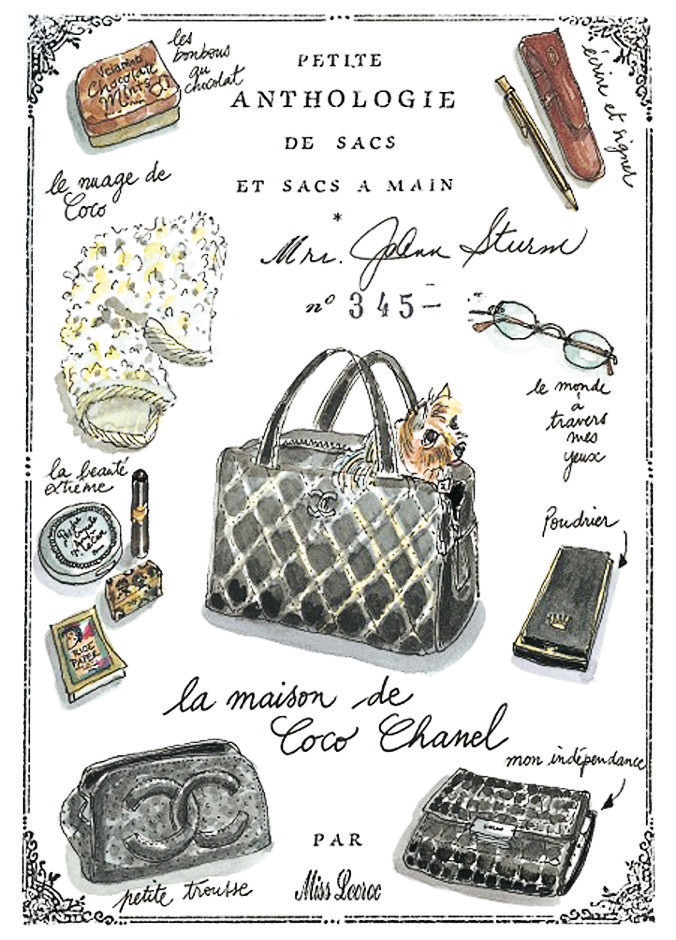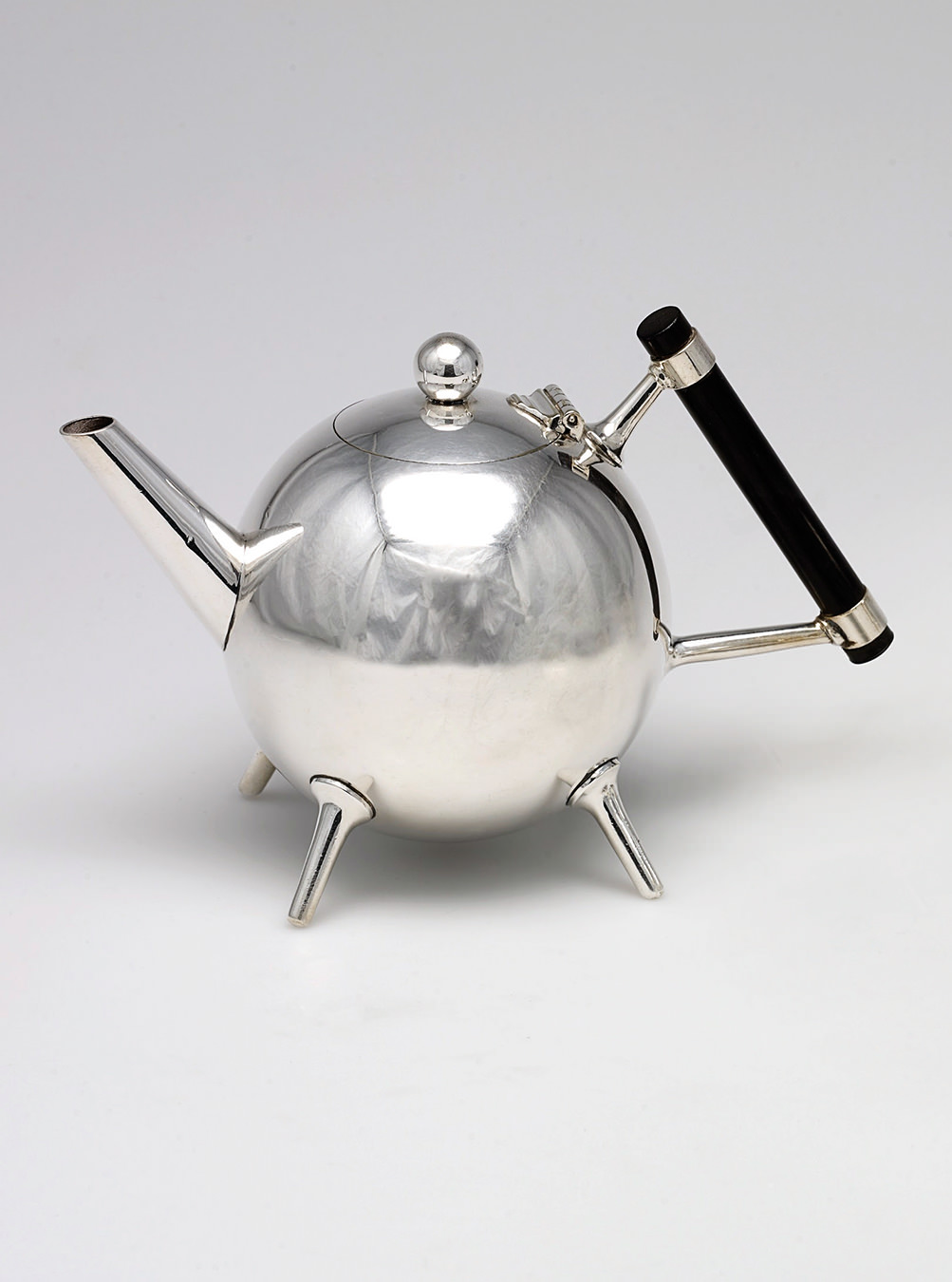Reece Terris
What goes up must come down.
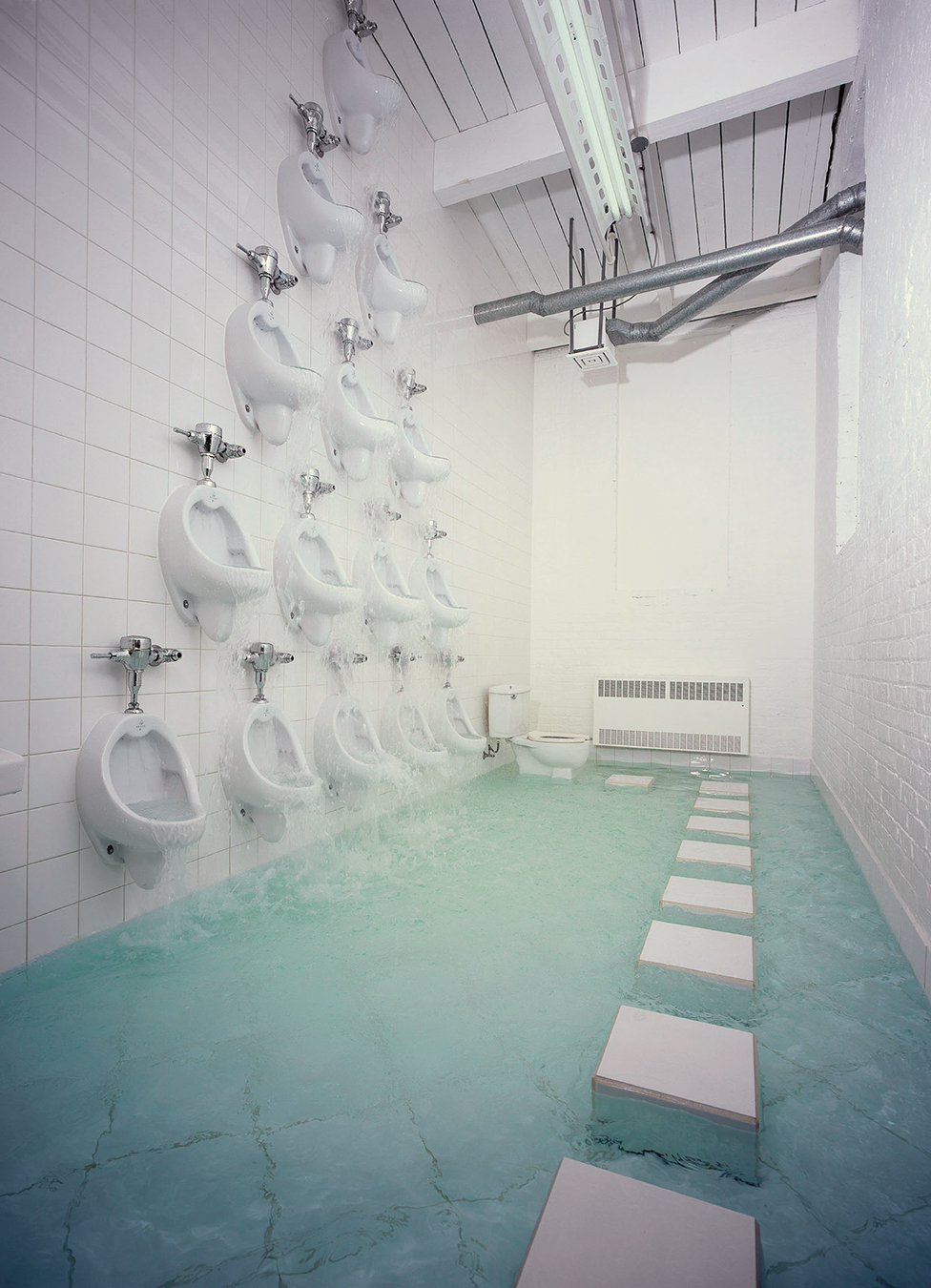
With jeans tattered and torn, skin leathery and tough, Reece Terris looks every bit the construction worker. At first glance, you wouldn’t suppose that one of Canada’s most promising visual artists was standing before you—and certainly not on the site of your about-to-be-remodelled home. But this is precisely how Terris likes it; as a partner in Terris Lightfoot Contracting, he keeps his two identities separate. As an artist, however, it is clear the two careers are intertwined.
“In my day job, it is often very difficult to overcome the bureaucratic nature of construction codes, which decrease our ability to be creative,” says Terris. “Architectural places impose limitations on how you use space. It is as if, at times, they are made to alienate you. There are many people who have an interest in ensuring that the city be used in a certain way, controlling our movement within the city. Perhaps my art-making stems from a place of frustration. In construction, I do what people want me to do, no comments. But my art comes from a non-compromised place.”
There was certainly nothing alienating about Terris’s most recent exhibition, Ought Apartment; instead, it drew upon on a collective human experience. The 18-metre apartment tower erected in the Vancouver Art Gallery rotunda was divided into six floors; each contained a single life-sized unit equipped with living area, kitchen, and bath, and was decorated to reflect the aesthetics and social values of each of the last six decades. For two years, Terris researched interior and industrial design trends dating back to the 1950s, and accumulated objects from wherever he could find them—including the homes of his construction business clientele.
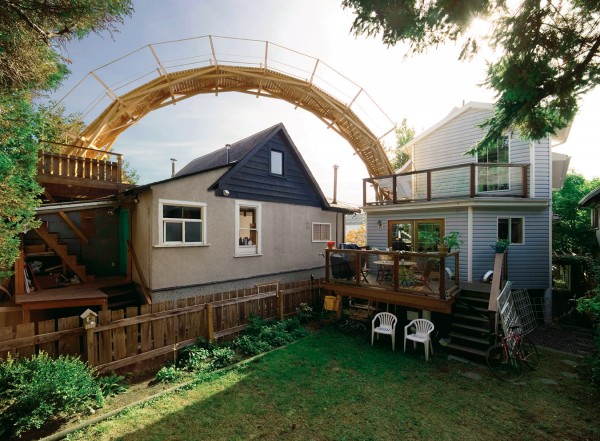
Bridge, 2006.
While Terris’s day job may have lent skills and resources to the project, his body of artwork demonstrates that he is more than just some naive construction-worker-cum-artist. The Vancouver Art Gallery’s Audain Curator of British Columbia Art, Grant Arnold, had his eye on Terris for some time prior to commissioning the artist, but it was after seeing works like Bridge (Wooden Arch) that he knew Ought Apartment was a must. Bridge was a functioning sculptural work connecting the upper balcony and veranda of two neighbouring residential properties; it reached approximately four storeys and spanned 11 metres. Constructed at Terris’s home, Bridge was open to the public 24 hours a day over a six-week period before being dismantled. Reflecting on his experience standing atop it, Arnold says, “Bridge was an intervention in public space. The bodily experience of moving across it challenges the conventional ways of moving through urban spaces. It was Reece’s idea to later do an apartment tower in the Gallery rotunda. I was simply waiting for the opportunity to have him do it.”
With an even earlier work, American Standard, Terris transformed the men’s public washroom facilities at Simon Fraser University’s Alexander Studios into an indoor fountain. Fifteen urinals were mounted onto a wall in a pyramid, and as the water overflowed from the uppermost urinal, it splashed its way down through the formation, flooding the sunken floor. Visitors were able to enter the space using tiled stepping stones that provided access directly to the sink and preexisting toilet, leaving the facility fully functional. “It is something we are accustomed to seeing, but that is totally out of context,” says Terris of the project. “It asks us to think about the materiality of our culture. My artworks show people who don’t build or make that there are whole other ways other than what is the common experience.”
When Reece Terris dreams, he dreams big. “Works like Bridge are a dialogue with the moment, and the gallery doesn’t always allow you to do that,” he says. “Either you are projecting, or the moment is over. When the idea for a work is great, you have to seize the opportunity to build it when that opportunity comes. That is why I am often interested in ways of using the city as a canvas.”
There is unquestionably an ephemeral quality inherent in Terris’s art, whether it is seen in a gallery or from the street. “Once the work is in the world it becomes part of the cultural discourse of what has come before and what it may inform in the future,” he says. “Whether a work continues to exist physically beyond its moment is irrelevant.”
Photos provided by the Jennifer Kostuik Gallery.

